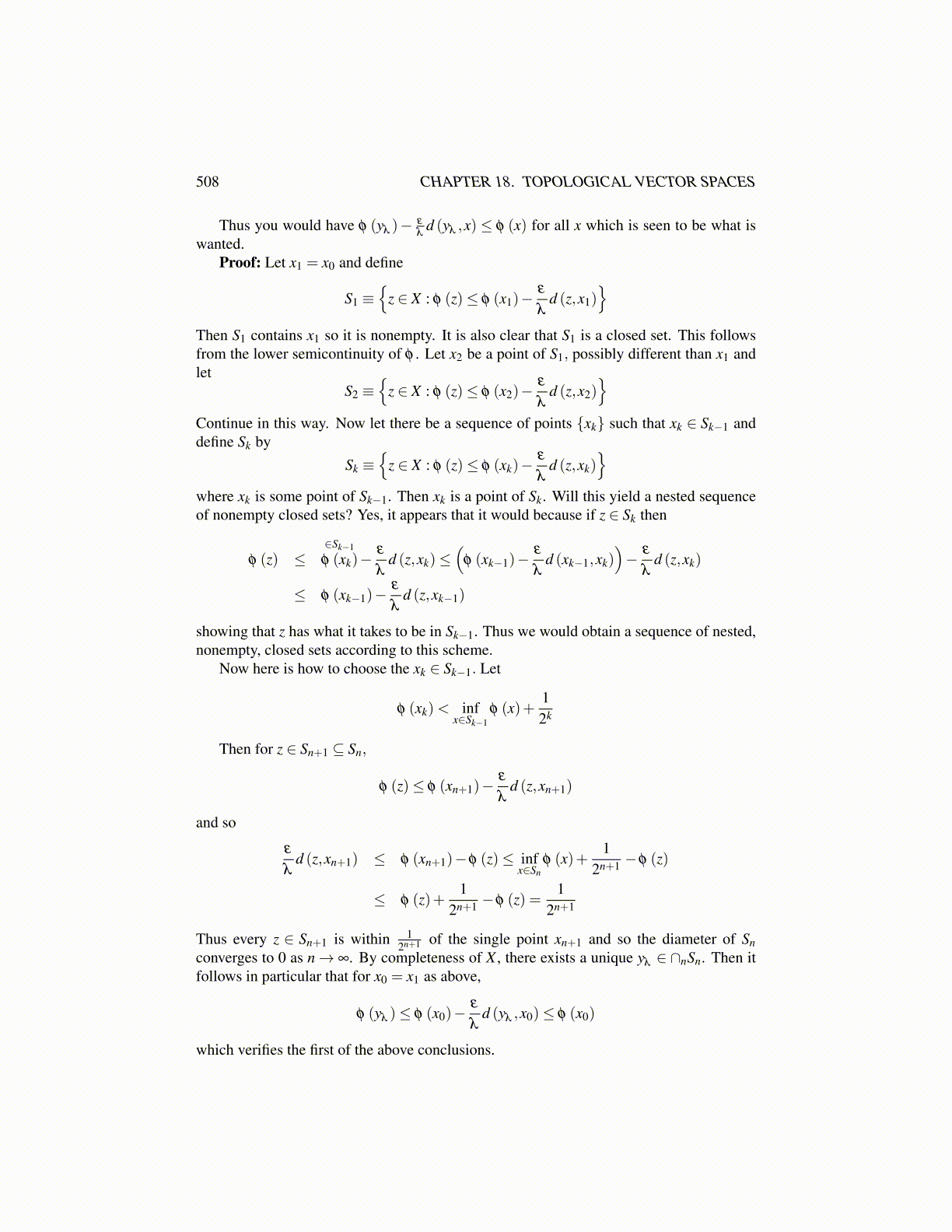
508 CHAPTER 18. TOPOLOGICAL VECTOR SPACES
Thus you would have φ (yλ )− ε
λd (yλ ,x) ≤ φ (x) for all x which is seen to be what is
wanted.Proof: Let x1 = x0 and define
S1 ≡{
z ∈ X : φ (z)≤ φ (x1)−ε
λd (z,x1)
}Then S1 contains x1 so it is nonempty. It is also clear that S1 is a closed set. This followsfrom the lower semicontinuity of φ . Let x2 be a point of S1, possibly different than x1 andlet
S2 ≡{
z ∈ X : φ (z)≤ φ (x2)−ε
λd (z,x2)
}Continue in this way. Now let there be a sequence of points {xk} such that xk ∈ Sk−1 anddefine Sk by
Sk ≡{
z ∈ X : φ (z)≤ φ (xk)−ε
λd (z,xk)
}where xk is some point of Sk−1. Then xk is a point of Sk. Will this yield a nested sequenceof nonempty closed sets? Yes, it appears that it would because if z ∈ Sk then
φ (z) ≤∈Sk−1
φ (xk)−ε
λd (z,xk)≤
(φ (xk−1)−
ε
λd (xk−1,xk)
)− ε
λd (z,xk)
≤ φ (xk−1)−ε
λd (z,xk−1)
showing that z has what it takes to be in Sk−1. Thus we would obtain a sequence of nested,nonempty, closed sets according to this scheme.
Now here is how to choose the xk ∈ Sk−1. Let
φ (xk)< infx∈Sk−1
φ (x)+12k
Then for z ∈ Sn+1 ⊆ Sn,
φ (z)≤ φ (xn+1)−ε
λd (z,xn+1)
and so
ε
λd (z,xn+1) ≤ φ (xn+1)−φ (z)≤ inf
x∈Snφ (x)+
12n+1 −φ (z)
≤ φ (z)+1
2n+1 −φ (z) =1
2n+1
Thus every z ∈ Sn+1 is within 12n+1 of the single point xn+1 and so the diameter of Sn
converges to 0 as n→ ∞. By completeness of X , there exists a unique yλ ∈ ∩nSn. Then itfollows in particular that for x0 = x1 as above,
φ (yλ )≤ φ (x0)−ε
λd (yλ ,x0)≤ φ (x0)
which verifies the first of the above conclusions.